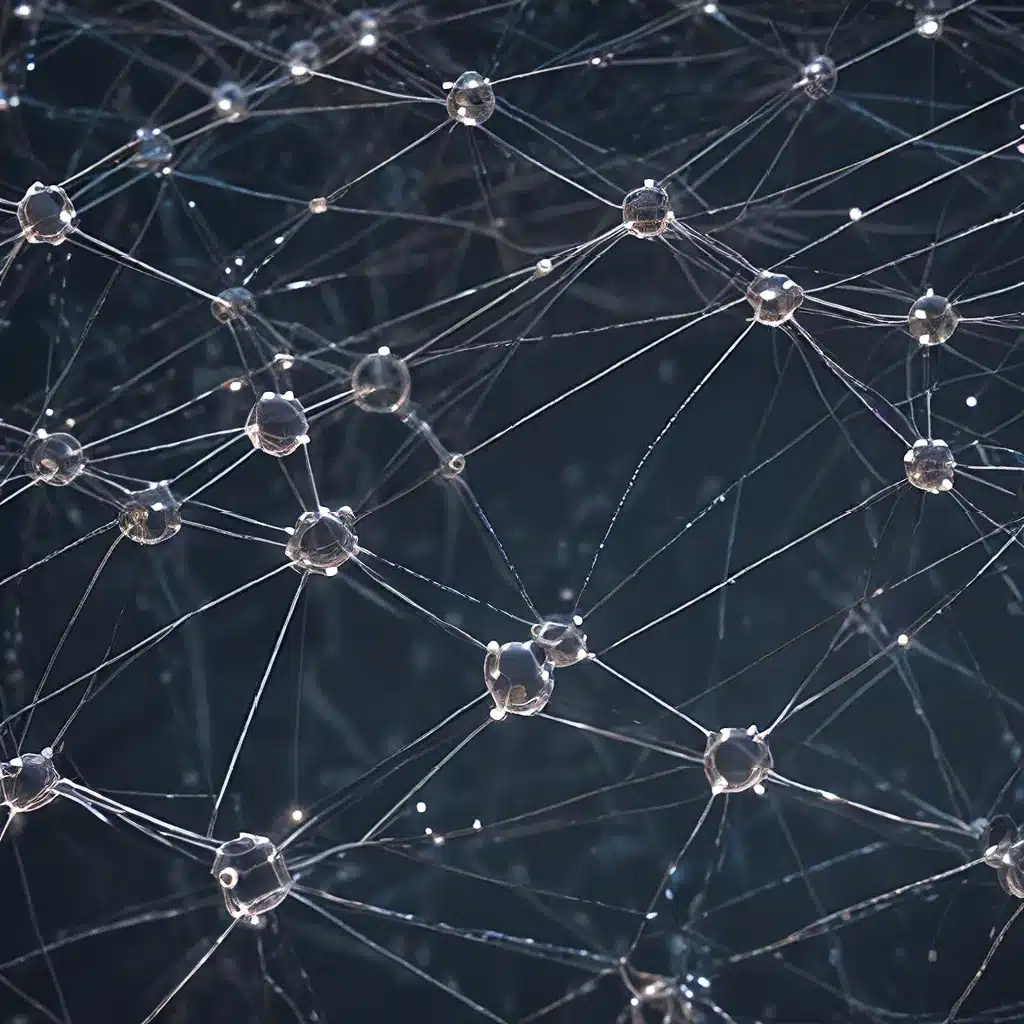
Navigating the Evolving Landscape of Sensor Networks
The world of sensor networks has undergone a remarkable transformation in recent years, driven by the rapid advancements in Internet of Things (IoT) technologies. These interconnected, distributed networks of sensors are at the forefront of revolutionizing how we interact with and understand our physical environments. From smart cities and industrial automation to environmental monitoring and healthcare applications, sensor networks have become an integral part of our digital landscape.
At the heart of this evolution lies the critical challenge of optimizing connectivity and efficiency within these complex, distributed systems. As sensor networks grow in scale and complexity, the need for robust, self-organizing algorithms has become increasingly paramount. Distributed algorithms have emerged as a powerful solution, enabling sensor nodes to coordinate and collaborate without relying on a central point of control.
Distributed Algorithms: Empowering Sensor Network Resilience
Distributed algorithms are a class of computational procedures that can be executed by multiple, interconnected nodes within a sensor network. Unlike traditional centralized approaches, which require a single, dominant controller, distributed algorithms leverage the collective intelligence and decision-making capabilities of the sensor nodes themselves.
This decentralized approach offers several key advantages:
-
Improved Scalability: Distributed algorithms can seamlessly accommodate the addition or removal of sensor nodes, allowing sensor networks to dynamically adapt to changing conditions without compromising performance.
-
Enhanced Resilience: By eliminating single points of failure, distributed algorithms enhance the overall resilience of sensor networks, ensuring that the system can continue to operate even in the face of individual node failures or disruptions.
-
Reduced Latency: With sensor nodes making autonomous decisions based on local information, distributed algorithms can significantly reduce communication latency, enabling faster response times and more time-sensitive applications.
-
Energy Efficiency: Distributed algorithms can optimize the energy consumption of sensor nodes, minimizing the need for frequent battery replacements or recharging, a critical consideration for many IoT deployments.
Connectivity Optimization: Ensuring Reliable Data Transmission
One of the primary challenges in sensor network design is maintaining robust connectivity between the distributed sensor nodes. Effective connectivity is essential for ensuring the reliable transmission of data, enabling seamless integration with higher-level systems and cloud-based analytics.
Distributed algorithms have emerged as powerful tools for addressing this challenge. Topology control algorithms, for instance, allow sensor nodes to dynamically adjust their transmission power and communication ranges, forming an efficient network topology that maximizes coverage and minimizes interference.
Sensor Networks have also leveraged clustering algorithms, which group sensor nodes into collaborative clusters, each with a designated cluster head responsible for coordinating intra-cluster communication and aggregating data. This hierarchical approach can significantly improve the scalability and efficiency of the overall network.
Energy Management: Powering Sensor Networks Sustainably
Energy management is a critical concern in the design and deployment of sensor networks, particularly in remote or resource-constrained environments. Sensor nodes are often powered by batteries or energy-harvesting technologies, and the efficient utilization of this limited energy resource is crucial for ensuring long-term, sustainable operation.
Distributed algorithms have played a pivotal role in addressing energy management challenges. Sleep-wake scheduling algorithms, for instance, allow sensor nodes to alternate between active and sleep modes, reducing their power consumption during periods of inactivity. Load balancing algorithms, on the other hand, distribute the computational and communication tasks among the sensor nodes, ensuring that the energy burden is shared evenly across the network.
Furthermore, energy-aware routing protocols leveraging distributed algorithms can optimize the data transmission paths, minimizing the energy consumed during communication. By considering factors such as remaining battery life, channel quality, and network congestion, these protocols ensure that data reaches its destination with minimal energy expenditure.
Security and Privacy Considerations
As sensor networks become increasingly ubiquitous, the need for robust security and privacy measures has also grown exponentially. Sensor nodes, often deployed in public or remote environments, are vulnerable to various security threats, including data tampering, unauthorized access, and denial-of-service attacks.
Distributed algorithms have emerged as a valuable tool for enhancing the security of sensor networks. Secure clustering algorithms, for example, can help establish trusted communication channels between sensor nodes, mitigating the risk of malicious infiltration. Distributed intrusion detection systems, on the other hand, leverage the collective monitoring and analysis capabilities of the sensor nodes to identify and respond to security breaches in a decentralized manner.
Moreover, privacy-preserving data aggregation algorithms allow sensor nodes to process and transmit data in a secure and anonymous fashion, protecting sensitive information from unauthorized access or misuse.
Adapting to Emerging Trends and Future Developments
As the sensor network landscape continues to evolve, distributed algorithms will play an increasingly crucial role in addressing the ever-changing challenges and opportunities.
Edge computing and fog computing architectures, for instance, leverage distributed algorithms to enable real-time data processing and decision-making at the network edge, reducing latency and improving responsiveness. Meanwhile, blockchain-based sensor networks are exploring the use of distributed algorithms to enhance the security, transparency, and auditability of sensor data and transactions.
Furthermore, the integration of artificial intelligence (AI) and machine learning (ML) techniques with distributed algorithms is opening up new avenues for predictive maintenance, anomaly detection, and proactive optimization within sensor networks.
As the sensor network ecosystem continues to evolve, the role of distributed algorithms in shaping its future will become increasingly vital. By empowering sensor nodes with the ability to collaborate, adapt, and optimize their operations, these algorithms will play a pivotal role in realizing the full potential of IoT and advancing the frontiers of sensor network technology.